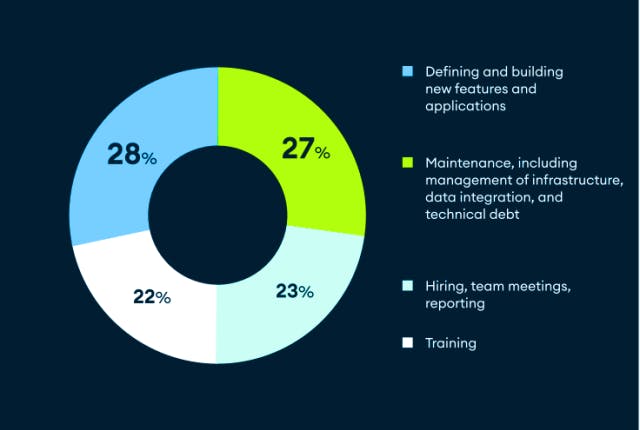3 Factors Limiting Developers’ Innovation
September 8, 2022
Software has steadily become the engine of business growth and innovation, which has led to the demand for new applications — for business or consumers — to grow exponentially.
According to the International Data Corporation, there will be 750 million new applications built by 2025. That means there will be more applications built over the next few years than were built in the software industry’s first 40 years.
With many thousands of new applications rolling out every month, businesses need more developers who can innovate. Indeed, the U.S. Bureau of Labor and Statistics reports that in the United States alone, the workforce will need 400,000 more developers by the end of this decade.
But in addition to an increasing number of developers, organizations also need to ensure that their development teams are productive, efficient and able to innovate. A recent MongoDB survey suggests that developers are struggling with that.
How do developers spend their time?
The goal for developers is to define and build new features and applications. This type of innovation is crucial to business success, since software innovation leads to benefits such as improved customer experience, cost reduction and increased productivity. MongoDB’s 2022 Report on Data and Innovation, a survey of 2,000 Asia-Pacific technology professionals, found that companies share two top goals for innovation: increasing internal efficiency and productivity, and building better products. In other words: building better stuff, faster.
But is this happening? The survey says “not really.” Here is a breakdown of how those 2,000 IT professionals reported spending their time:

Only 28% of technology teams’ time is spent working on defining and building new features and applications, compared to a whopping 72% of time managing infrastructure and completing administrative tasks and projects. Needless to say, this is not conducive to innovation.
What is limiting developer innovation?
What is blocking developers from spending more time building new software? The survey points to three top contributors:
-
High developer workloads: One Haystack survey reports that 80% of developers describe themselves as burned out. This obviously can affect an employee’s ability to innovate and create quality work. With the continued growth of data volume and app creation, burnout is only getting worse. This problem can only be addressed by providing developers with the proper tools and a simplified data architecture. Both allow devs to reduce their overall cognitive load and allow them to build applications more efficiently.
-
Complex data architecture: Our survey discovered that complexity limits innovation. Whether a legacy system with decades of organic sprawl or a cloud environment that has become overly complex as more and more components have been added to it, a “spaghetti architecture” requires developers to spend significant time learning, connecting and maintaining disparate technologies.
-
Legacy systems and technical debt: The systems that businesses use, especially outdated technology and overly complex systems, are often major blockers for developers and for an organization’s innovation. Huge amounts of time and resources go into maintenance and in building ways to connect old systems to newer technology. Even as digital transformation efforts move a lot of companies to the cloud, a McKinsey survey found that 60% of CIOs saw their technical debt increase over the previous three years. This means IT decisions made years or decades ago hobble the agility of today’s developers.
Want to learn more about developers, data, and innovation? Download MongoDB’s 2022 Data and Innovation Report.